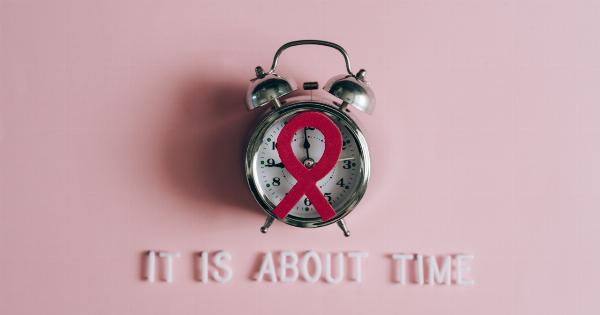Every year on December 1st, we commemorate World AIDS Day to raise awareness about HIV and AIDS, honor those who have lost their lives to the disease, support those living with HIV, and highlight the importance of continuing efforts to prevent and treat HIV infections. This day provides an opportunity to delve into the science behind HIV and AIDS, understand the latest advancements in research and treatment, and shed light on the challenges that lie ahead.
Understanding HIV: The Basics
HIV, which stands for Human Immunodeficiency Virus, is a virus that attacks the immune system, specifically targeting CD4 cells (also known as T cells). These cells play a crucial role in assisting the body in fighting off infections and diseases.
The virus spreads through the exchange of certain bodily fluids, such as blood, semen, vaginal fluids, and breast milk. Unprotected sexual intercourse, sharing needles, and transmission from an infected mother to her baby during childbirth or breastfeeding are common routes of transmission.
The Lifecycle of HIV
Once inside the body, HIV undergoes a complex lifecycle. It primarily targets CD4 cells by binding to a receptor known as CD4 receptor and a co-receptor called CCR5 or CXCR4, which are present on the surface of these cells.
The virus then fuses with the cell membrane and releases its genetic material into the cell.
Once inside the cell, HIV hijacks the cellular machinery to reproduce itself. It uses its genetic material, which is in the form of RNA, to produce viral DNA through an enzyme called reverse transcriptase.
The viral DNA integrates into the host cell’s DNA, becoming a permanent part of the cell’s genetic material.
The infected cell then starts producing new HIV particles, which are released and can infect other CD4 cells.
This iterative process gradually weakens the immune system and reduces the body’s ability to combat infections and illnesses, leading to the development of AIDS (Acquired Immunodeficiency Syndrome).
Stages of HIV Infection
HIV infection progresses through several stages, each characterized by different levels of viral replication, immune response, and clinical symptoms. The stages are as follows:.
Stage 1: Acute HIV Infection
Shortly after contracting the virus, individuals may experience flu-like symptoms, such as fever, fatigue, sore throat, rash, and swollen lymph nodes. However, some may not show any symptoms during this initial stage.
Stage 2: Clinical Latency
This stage, also known as chronic HIV infection or the asymptomatic stage, can last for an extended period, generally around 10 years or more, without significant symptoms. However, the virus continues to replicate, albeit at lower levels.
It is during this stage that HIV can still be transmitted to others, even if there are no noticeable symptoms.
Stage 3: AIDS
AIDS is the most advanced stage of HIV infection.
It is diagnosed when the immune system is severely damaged, with the CD4 cell count falling below 200 cells per cubic millimeter of blood, or the occurrence of specific opportunistic infections or cancers. Symptoms may include weight loss, chronic diarrhea, persistent fever, night sweats, and various opportunistic infections.
Diagnosing and Monitoring HIV
Early detection of HIV is crucial to prevent its progression and initiate appropriate treatment. Several diagnostic methods are available to detect HIV infection:.
1. Antibody Testing
Antibody tests, which detect the presence of antibodies produced by the immune system in response to HIV infection, are the most common screening tests. These include rapid tests, enzyme immunoassays (EIAs), and Western blot tests.
2. Nucleic Acid Testing (NAT)
NAT directly detects the genetic material of HIV (RNA or DNA) using techniques like PCR (Polymerase Chain Reaction). These tests are highly sensitive and are typically used in situations where early detection or confirmation of infection is vital.
Monitoring HIV Infection
Regular monitoring of HIV is crucial to assess the progression of the disease, monitor the effectiveness of treatment, and manage potential complications.
Common monitoring tests include CD4 cell count determination, HIV viral load testing, and drug resistance testing.
Treatment and Prevention
Significant progress has been made in the development and improvement of HIV treatment and prevention strategies.
The primary goal of HIV treatment is to suppress viral replication, restore immune function, and protect individuals from developing AIDS-related illnesses. This is achieved through a combination of antiretroviral therapy (ART) regimens.
Antiretroviral Therapy (ART)
ART involves the use of a combination of antiretroviral drugs to target different stages of HIV’s lifecycle. These drugs can reduce the viral load in the body, allowing the immune system to recover.
ART not only improves the health of individuals living with HIV but also significantly reduces the risk of transmitting the virus to others.
Pre-Exposure Prophylaxis (PrEP)
PrEP involves the use of antiretroviral medications by individuals who are at high risk of acquiring HIV. When taken consistently, PrEP can reduce the chances of HIV infection by more than 90%.
It is recommended for individuals in serodiscordant relationships, sex workers, and those who engage in high-risk behaviors.
Post-Exposure Prophylaxis (PEP)
PEP involves the use of antiretroviral medications immediately after potential exposure to HIV to prevent infection. It is typically administered within 72 hours of exposure, with the duration of treatment lasting for 28 days.
PEP is commonly used in cases of sexual assault, needlestick injuries, or unprotected sexual encounters.
Challenges and Ongoing Research
While significant progress has been made in combating HIV and AIDS, several challenges persist:.
1. Access to Treatment
Access to affordable and quality HIV treatment remains a challenge, particularly in low-income countries and marginalized communities. Efforts are being made to ensure equitable access to treatment for all individuals living with HIV.
2. Drug Resistance
Over time, HIV can develop resistance to certain antiretroviral drugs, limiting treatment options. Ongoing research focuses on developing new drugs and optimizing treatment regimens to combat drug resistance.
3. Vaccine Development
Despite concerted efforts, the development of an effective HIV vaccine remains a challenge. Researchers continue to investigate various vaccine approaches to prevent HIV infection and eliminate the virus.
4. Combating Stigma and Discrimination
Stigma and discrimination associated with HIV and AIDS still prevail in many societies, preventing individuals from seeking testing, treatment, and support. Addressing these issues is crucial to ensuring comprehensive care for affected individuals.
Conclusion
World AIDS Day serves as a reminder of the ongoing fight against HIV and AIDS. Understanding the scientific aspects of the disease, its transmission, stages, diagnosis, and treatment is crucial in combating the virus.
While progress has been made, it is essential to continue investing in research, improving access to treatment and prevention strategies, and working towards a world free from the burden of HIV and AIDS.































